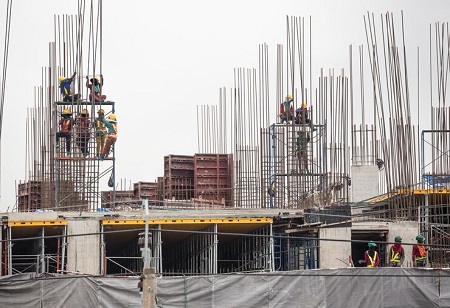
Cement holds the key to the modern infrastructure and its manufacturing is among the most carbon-intensive industrial processes. The environmental impact is increasing with the increased demand in fast-growing urban areas. Circular construction, supported by recycled cement, supplementary cementitious materials (SCMs), and recycled aggregates, are becoming a viable approach to achieve virgin cement reduction and sustainable development.
Companies and researchers from around the world are demonstrating that it is possible to substitute large quantities of cement and aggregates with recycles or alternative materials without compromising performance. From concrete recycling to low-clinker cements, these innovations form the foundation of a new, resource-efficient construction economy.
Concrete recycling prevents the dumping of demolition waste into landfills, and ensures its utilization as a recycled concrete aggregate (RCA). Researchers in Amritsar, Punjab tested coarse vs. fine recycled aggregate and found that quality of RCA can meet performance requirements in most applications. This supports new standards of use of recycled aggregate, which are gradually becoming prevalent in India.
A team of researchers at Amity University Lucknow studied recycled aggregate concrete (RAC) using construction and demolition waste. They discovered that the mechanical performance was only slightly lower than that of virgin mixes but acceptable in structural applications provided it was processed properly. The authors underlined that more explicit Indian Standard (IS) codes would hasten the wider use of RAC.
Also Read: GST Reduction on Cement: Easing Cost for Homebuyers and Builders

In addition to aggregates, supplementary cementitious materials reducing the use of clinker are key in reducing emissions. Fly ash, slag, and calcined clay are already used widely. Researchers at IIT Indore developed a geopolymer concrete using fly ash and Ground Granulated Blast-Furnace Slag (GGBS) which reduced CO2 emissions by approximately 80 percent and the cost by approximately 20 percent.
As Dr. Abhishek Rajput of IIT Indore explained, “This development is a step toward transforming the way we build our future infrastructure as stronger, faster, and greener.”
These attempts demonstrate that recycled cement powder, mineral additives and low-clinker cements can cause a significant decrease in reliance on clinker while maintaining performance.
Case studies indicate that 20–40 percent substitution with RCA or SCMs is realistic for many mixes. Examples seen worldwide like 100 percent recycled clinker of Holcim in France indicate that it can go to greater levels when the technologies of circular cement are applied on a larger scale.
Case studies of recycled cement application in structural concrete also show that mixtures of RCA and SCMs are durable and also reduce embodied carbon.
India’s largest cement companies are investing heavily in circular economy in construction.
UltraTech reported 21.7 percent recycled input material in FY24, while Ambuja Cement co-processed nearly 0.5 million tonnes of alternative fuels in FY23–24, achieving a 7.7 percent thermal substitution rate. These achievements underline the commitment to embodied material reuse and reducing clinker content.
.jpeg) Environmental Benefits and Carbon Savings
Environmental Benefits and Carbon SavingsThe advantages of recycled concrete on CO 2 are quite significant. Each ton of cement substituted with RCA or SCMs lowers emission by 800 kilograms. In the rapidly developing Indian market, scaling of these methods will result in huge carbon emissions savings and improved life-cycle evaluation (LCA) of circular concrete.
Also Read: PEB vs RCC Buildings: Which Is Better for Industrial Use?
Progress is evident, but challenges still persist. High-strength structural concrete cannot yet be completely substituted and SCM supplies such as fly ash can decline due to coal plant shutdown. Scaling will require stronger building codes, effective emissions parameter and incentives for CDW (construction demolition waste) recycling.
Nevertheless, researches demonstrate that techniques for recycling end-of-life concrete into new cement are feasible.
The concept of scaling circular construction in India implies the use of recycled aggregates, SCMs, and novel cements together. Through supportive policies and further innovation, India can reduce emissions, preserve raw materials, and create a global benchmark in sustainable construction.
Circular construction is not just a vision—it is the future of India’s cement industry.
Virgin cement is newly manufactured cement that is made of raw limestone and clay through energy-intensive processes. It is essential to cut it down due to the fact that the manufacturing of cement is a significant source of CO2 emissions as it generates nearly 8 percent of CO2 globally.
Approximately 2-3 billion tonnes of construction and demolition (C&D) waste is generated every year in the world, a significant proportion of which is concrete and cement-based material. Recycling this waste can significantly cut landfill use and reduce demand for virgin resources.
Studies show that 20–40 percent of virgin cement and aggregates can typically be replaced with RCA in new concrete mixes. In optimized conditions, replacement levels can reach up to 50% without compromising performance.
We use cookies to ensure you get the best experience on our website. Read more...